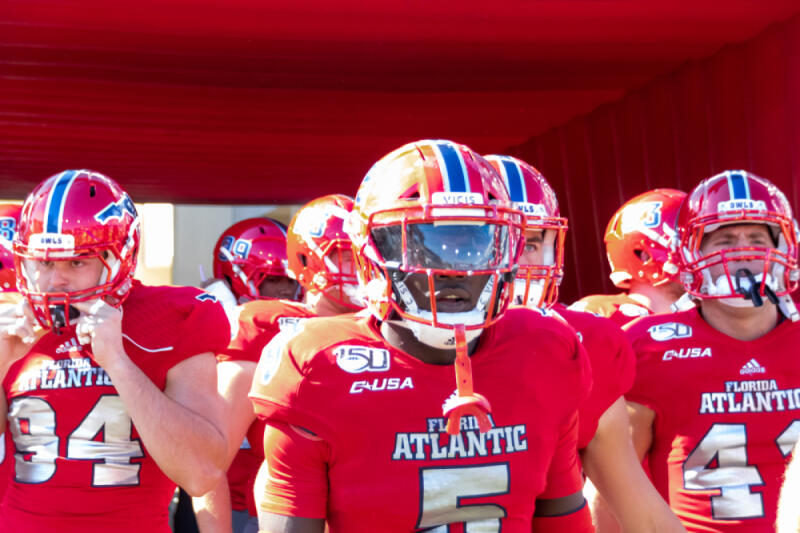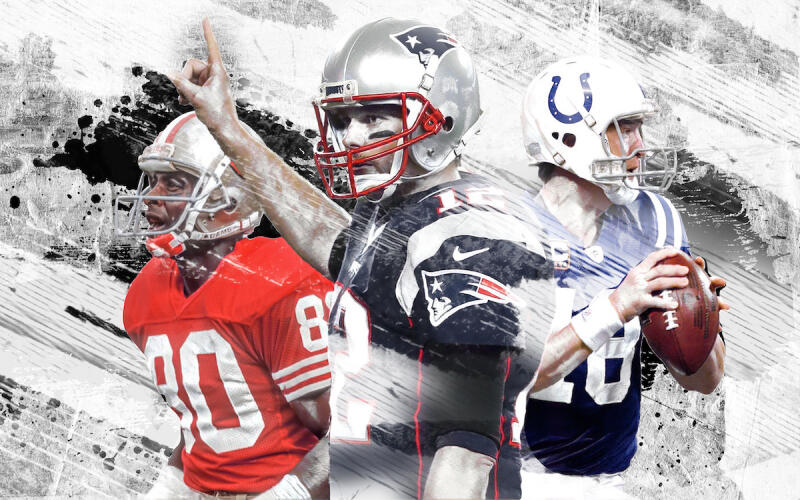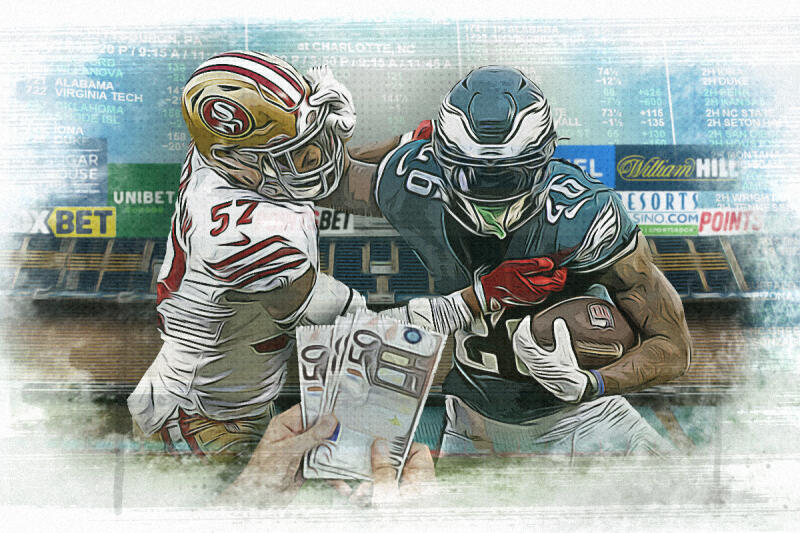The Psychology of Fan Loyalty: A Statistical Analysis of Fan Behavior and Motivation
Sports fandom is supremely unique and interesting. Across professional sports, millions of people choose to support one specific team above all others. This support comes in many ways, whether it’s getting tickets to watch a team in person, catching every game on TV or buying merchandise to showcase team pride.
There are often debates about which fan bases are the most passionate. For some teams, the stadium is always filled during home games. Other teams struggled to even fill half the venue on a regular basis. Fan loyalty can be fickle, and there are many factors that motivate fans.
What exactly drives fan loyalty? Let’s take at some numbers and statistics that might provide some insights regarding the psychology of fan behavior.
Fans Support Greatness
If you build it, they will come. Field of Dreams had it right. Franchises that build a sustained winner will improve fan loyalty and draw fans to their venues. This doesn’t simply mean putting together a few competitive seasons. The top franchises that create perennial championship contenders end up having the most loyal fans in all of sports.
The New England Patriots are the standard when it comes to sustained greatness. The pairing of Tom Brady—the greatest quarterback of all time—and Bill Belichick—the greatest coach in NFL history—led the Patriots to nine Super Bowl appearances and six championships from 2001-2019. New England made the playoffs in 17 of 19 seasons and reached the AFC Championship Game an incredible 13 times. During that stretch of dominance, every single one of the Patriots’ home games was sold out.
New England’s sellout streak started when Robert Kraft bought the team in 1994, more than a half-decade before the Brady-Belichick dynasty began. The Patriots made the playoffs in four of those first five years, including a run to the Super Bowl in the 1996 season. Had New England fallen out of contention for several seasons, it’s hard to believe that fans would still be filling Gillette Stadium with regularity.
The Golden State Warriors have essentially been the NBA’s version of the Patriots over the last decade. The Warriors have won four championships and played in six NBA Finals since 2015, including a run of five straight Finals appearances from 2015-2019. It should come as no surprise that the Warriors have sold out every home game since becoming the NBA’s model franchise.
Golden State currently has a sellout streak that started on Dec. 18, 2012. It was Stephen Curry’s breakout season. The Warriors won 57.3% of their games and made their first of seven straight playoff appearances. Golden State led the NBA in attendance, filling up then-Oracle Arena with an average of 19,373 fans per night. In the previous four years, the Warriors never ranked better than 13th in NBA attendance.
In MLB, even the best teams are unable to sell out games on a nightly basis. It’s just the nature of the sport with 81 home games per team and stadiums that hold over 50,000 people. But fans are fans, and just like they do in football and basketball, baseball fans will be motivated to support a dynasty.
The San Francisco Giants are the closest thing to a dynasty that MLB has seen in the last two decades. While no team has won consecutive World Series in 23 years, the Giants won championships in 2010, 2012 and 2014.
San Francisco drew an average of 35,322 fans per game in 2009. The Giants ranked 10th in attendance, missing the playoffs for the sixth straight year. When San Francisco unexpectedly made a run to the 2010 World Series, its average attendance for home games bumped up to 37,499. The Giants would go on to sell out every game of the 2011 season as part of a 530-game sellout streak that ended in the middle of the 2017 campaign.
In the two seasons after winning their third World Series in five years, the Giants averaged 85.5 wins per season and failed to win a playoff game. Fans finally stopped going to San Francisco games in droves during the middle of a 64-98 season, during which the Giants finished in last place.
Fans Abandon Teams That Can’t Win
It should come as no surprise that the inverse is also true. Just as fans are motivated to support a winner, they are often quick to pull their support from a losing franchise. When it’s clear that a team has no hope of competing, that fact is usually reflected in the attendance figures.
There is no better example of this than the Oakland Athletics. With one of MLB’s worst ballparks and an owner who always keeps the A’s near the bottom of the league in payroll, the Athletics never had one of baseball’s highest attendances. But when the team competed, A’s fans did show a measure of support. When the A’s made their fourth straight playoff appearance in 2003, they ranked in the middle of the pack with an average attendance of 27,365. At the end of a 30-year stretch between playoff series victories, the Athletics averaged 20,521 fans per game during their second straight 97-win season.
It took just two years for more than half of those fans to disappear from Oakland Coliseum. MLB games were played without fans in 2020 because of the COVID-19 pandemic, and Oakland didn’t return to full capacity until halfway through the 2021 season. Just about all of the A’s top players left through trades or free agency in the winter of 2021. Fans knew that the team wasn’t trying to win in the 2022 season, and Oakland’s average attendance plummeted to 9,973. Just across the bay, the Giants drew more than three times as many fans as the A’s per game.
Oakland had the American League’s worst record in 2022. The team got off to an even more dismal start in 2023, on pace for the worst record in MLB history. One-third of the way through the 2023 season, the team is drawing 8,749 fans per contest at home. For their first two home games in May, the A’s drew 2,583 fans and 2,685 people on back-to-back nights against the Seattle Mariners. On May 15, the Arizona Diamondbacks beat the A’s in front of a paid crowd of 2,064. Oakland fell to 9-34, putting the team on track to lose a record 128 games.
The NFL is so popular throughout the United States that each stadium is mostly filled on a weekly basis, regardless of how teams perform. Still, the league’s worst franchises aren’t completely immune to being abandoned by pockets of fans. Just look at the Washington Commanders. Once one of the most successful teams in football, the Commanders fell from grace under owner Daniel Snyder.
Washington won three Super Bowls over a 10-year period from 1982-1991, doing so with three different quarterbacks. Not only has Washington failed to reach a Super Bowl since then, but the team hasn’t even played in an NFC Championship Game. The Commanders last won a playoff game in 2005.
With an average of 58,106 fans per game in the 2022 season, the Commanders played at 85.9% capacity. No other NFL team failed to sell fewer than 92.7% of the available tickets for the season. In 2019, Washington was one of three teams that failed to sell 80% of tickets for its home games. The Tampa Bay Buccaneers played at an average of 79.1% capacity, having not won a playoff game in the previous 16 years. The Cincinnati Bengals were dead last at 72.0% capacity. It’s no coincidence that the Bengals last won a playoff game in the 1990 season, at the time. Amid trips to the Super Bowl after the 2019 season, the Bengals and Buccaneers ended up selling out every home game in 2022.
Hope Trumps Success
The most passionate fan bases in sports continue to show loyalty to their respective teams in the absence of championships. Every franchise will face the reality of empty seats and declining television viewership if they are not competitive for long stretches of time. But the most loyal fans don’t need titles in order to support their team in droves. All they need is a little bit of hope.
Hope, especially for a championship-starved fan base, can ignite fan loyalty even more than years of success. It’s likely the explanation for the loyalty of Buffalo Bills fans. Bills fans have a reputation for being among the craziest in all of sports. Videos often go viral, showing Bills fans jumping through tables while tailgating in the parking lot. The passion of “Bills Mafia,” as they are affectionately called, goes well beyond those antics.
The Bills led the league during the 2021 season with an average local television rating of 47.16, according to Sports Business Journal. That means nearly half of all Buffalo residents who owned a TV were watching the Bills play throughout the year, each and every week. The median local TV rating for the 2021 NFL season was 23.23. The defending champion Chiefs averaged the second-highest local TV ratings, just behind the Bills.
When the Bills were eliminated from the playoffs that season in a wild playoff loss against the Kansas City Chiefs, 90% of the TVs that were turned on in Buffalo were being used to watch the Bills. It’s the reflection of a fan base that is desperate to win a championship. The Bills lost a record four straight Super Bowls from 1991-1994. Buffalo was a last-second field goal away from beating the New York Giants in Super Bowl XXV. The Bills have never won a Super Bowl in franchise history.
Before Boston became Title Town, the city was home to one of sport’s most beaten-down franchises. The Boston Red Sox went 86 long years between championships before finally beating the hated New York Yankees, overcoming the Curse of the Bambino and winning the 2004 World Series. On the way to that euphoric moment, Red Sox fans suffered countless heartaches, often believing they were about to get over the hump until the baseball gods pulled the rug out from under them.
The last such moment came in Game 7 of the 2003 American League Championship Series between the Red Sox and Yankees. Boston fans endured a historic collapse. Five outs away from eliminating their rivals and punching their ticket to the World Series, the Red Sox blew a three-run lead with ace Pedro Martinez on the mound. In the 11th inning, Yankees third baseman Aaron Boone hit a game-winning home run that sent the Red Sox home without a title for the 85th straight year.
More people in Boston watched the Red Sox lose Game 7 than watched the Patriots win the Super Bowl a few months later. New England was in the middle of winning three Super Bowls in four years. The Red Sox were in an 85-year championship drought and hadn’t even reached the World Series in 28 years. But the hope of a long-awaited title outweighed the promise of continued dominance.
Conclusion
When it comes to fan loyalty a few things are clear. Teams that become perennial championship contenders will create a fan base that fills their home venue on a regular basis. Teams that never contend for championships will alienate their fans and have a difficult time selling out games. There is a middle ground for teams that suffer lengthy title droughts but in contention enough to draw their fans in, year after year.
Aside from wins and losses, ownership can have a profound effect on fan loyalty. Owners who are cheap disliked, or trying to move a franchise to another city can drive a large portion of the fan base away. The best owners in sports usually reap the rewards with sellouts and fans who will stick by their team.
Our editorial content strives to be highly informative and educational to our audience, especially for visitors who are new or relatively new to analyzing and predicting sporting event results. All of our content is created by informed writers with backgrounds in their subject area and reviewed for omissions or mistakes.
Our editorial team is run by individuals with many years of experience in digital publishing, editorial, and content production. Our editorial content is always marked clearly in any instances where it may be sponsored by a third party, though it is still reviewed by our staff to ensure it remains consistent with our company mission.
- Popular
- Latest





